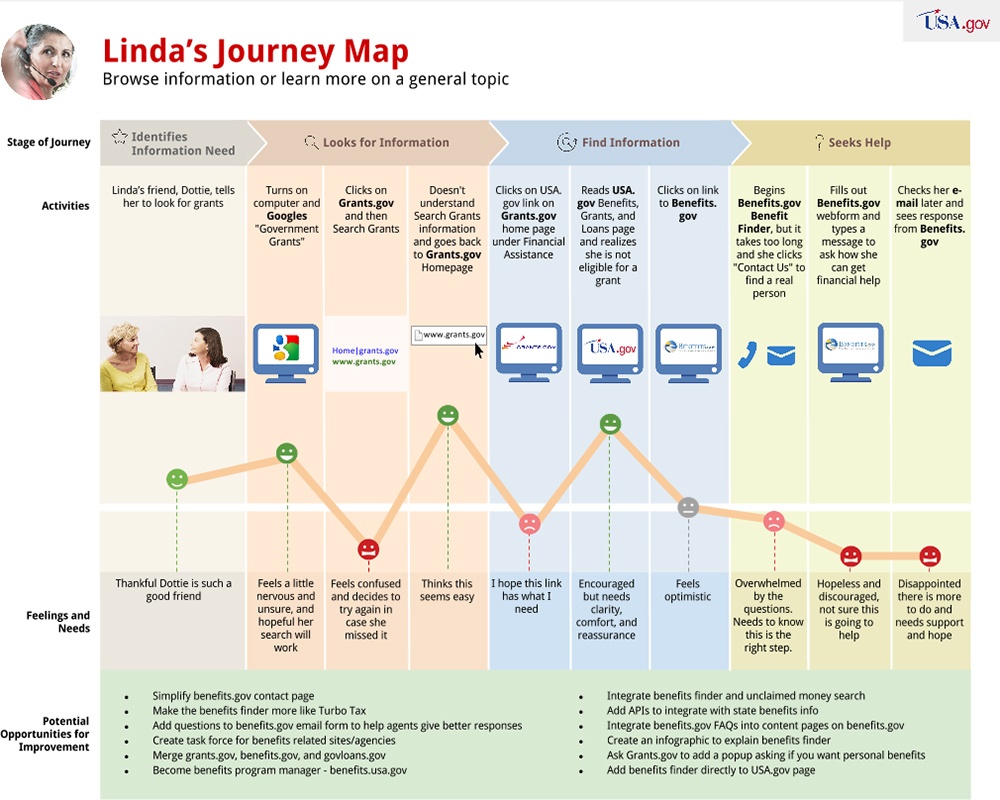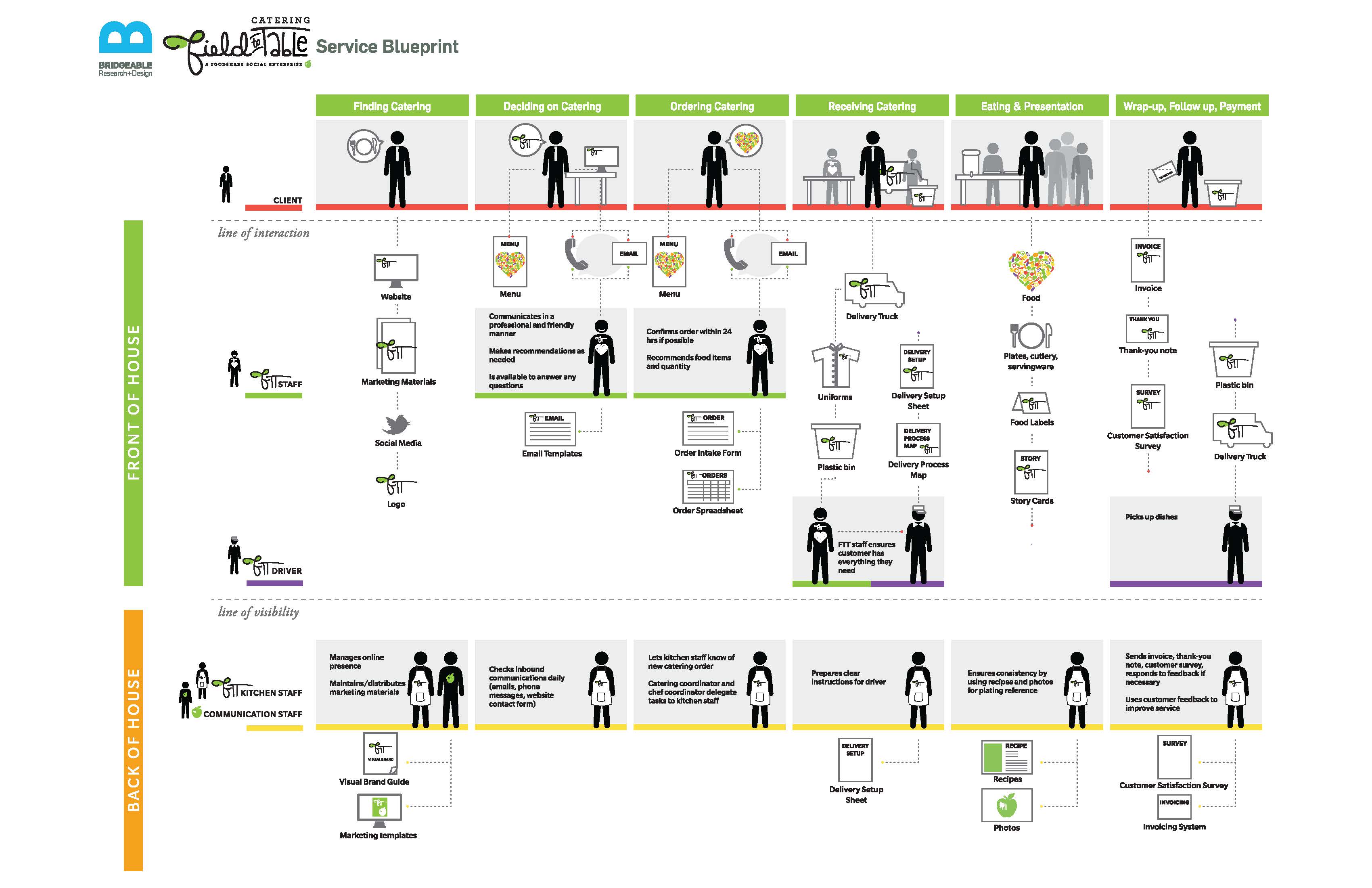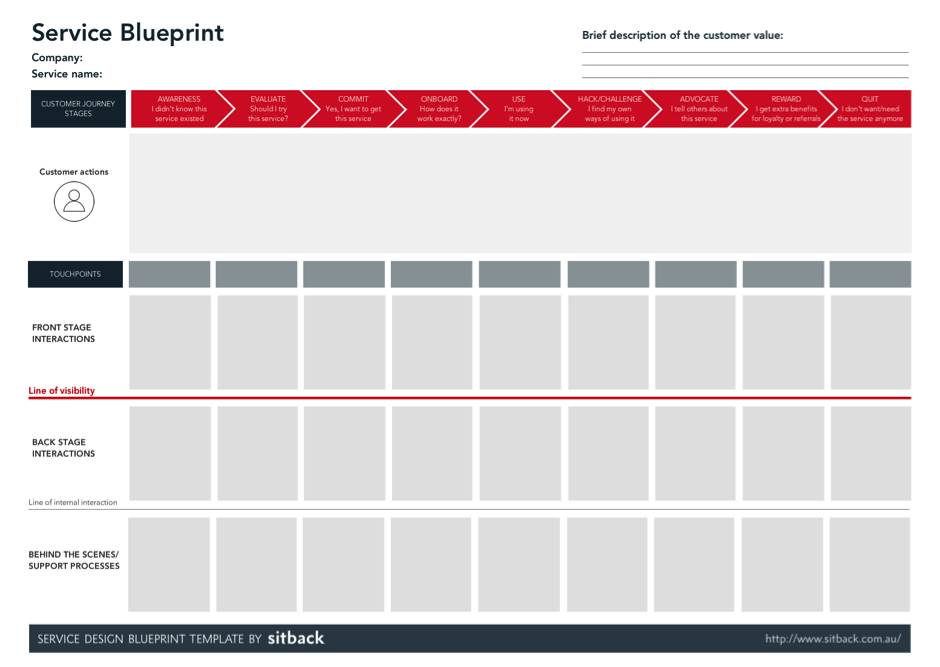Beyond the customer journeys: from CX maps to service blueprints

As User Experience practitioners, we have traditionally focused on understanding how users think, identifying customer pain points and envisioning a better experience for them.
Thus, even if we need to consider business goals and technological constraints when suggesting UX improvements, our job is to help companies shift their perspective from how they are organised/operate as a company, to how customers perceive and interact with their products or services.
Customer Experience Maps
Customer experience maps (CX Maps) are a really powerful tool in this process, as they help build empathy and visualise the end-to-end experience from the perspective of the user and the different touchpoints or customer interactions over time.
Example of “Customer journey” for Usa.gov (source)
Nevertheless, CX maps also present some limitations: by focusing exclusively on the customer, we run into the risk of ignoring the implications for the company of implementing the changes needed to deliver a better customer experience.
If we are redesigning a single product or touchpoint, the changes needed to deliver a new customer experience might be quite clear (e.g. new User Interface Design) and most of the people responsible for these changes might already be involved in the project (e.g. development, marketing).
But if we try to scale up this approach to more complex domains or to tackle problems that need to be addressed with an ecosystem of products and services across multiple touchpoints, the changes needed might not be that clear and might affect several teams, systems and processes and how they work together.
Considering change is always hard, if we don’t have a clear understanding/plan of what needs to change in an organisation to make a new customer experience possible, its chances of becoming a reality are dramatically reduced.
But we cannot know the implications of the customer experience improvements we are suggesting unless we truly understand how the company works, its business model, what people and systems are involved in delivering the different components of a product or service, and how they work together.
For these type of complex projects, taking a service design approach and using tools like ‘service blueprints’ instead of ‘customer experience maps’ can prove really valuable.
Service Blueprints
Service blueprints are visual deliverables that document not only the customer journey but all the things that go on beneath the surface that make the journey possible. This includes the front-stage activities that impact the customer directly and the backstage activities that happen behind the scenes.
Example of service blueprint for “Catering field to table” (source)
If we think of a restaurant, the front-stage activities will be everything that happens in the dining area, the backstage will be the kitchen and other behind-the-scenes processes including how the restaurant buys the ingredients, prints the menus or recruits staff.
Service blueprints can be used for several purposes:
- To better understand an existing service, document current processes and identify inefficiencies.
- To visualise a redesigned customer journey and highlight the front-stage and backstage activities needed to make it happen.
- To gain internal buy-in and foster collaboration by helping staff see how they are contributing to a new customer experience.
Are you interested in exploring how service blueprints can help
your organization deliver a better customer experience?
Download our service blueprint template by Sitback (PDF) for free.


